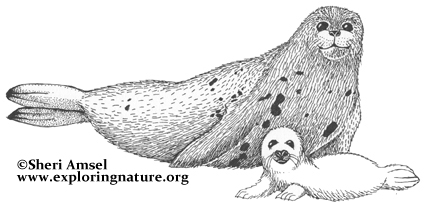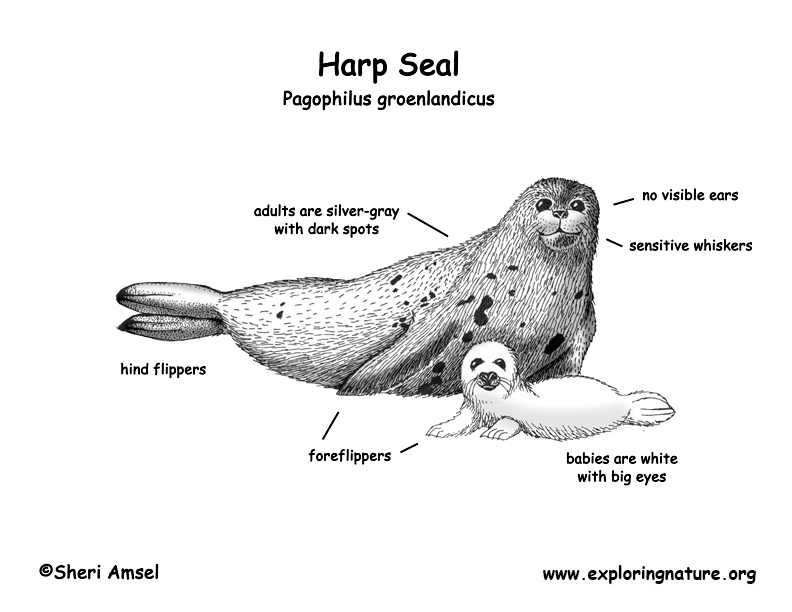

They are found in the North Atlantic Ocean and Arctic Oceans from Siberia to Newfoundland and Canada.
They live on and around the arctic pack ice, moving north in spring and south in the fall (migration). They can cover 5,000 miles in the yearly (annual) migration.
They can be more than 6 feet long and weigh up to 300 pounds. As adults they are silver-gray with white spots.
They come together into large herds on the ice to have their babies.
They eat fish and crabs.
They are hunted by polar bears, killer whales, sharks and man.
Females are pregnant for about 7.5 months (gestation). They have 1 baby in late winter. It is about 20 pounds at birth and covered with a soft, white fur.
They can live up to 30 years. They are listed as Lower Risk - least concern.
Kingdom: Animalia
Phylum: Chordata
Subphylum: Vertebrata
Class: Mammalia
Order: Carnivora
Suborder: Caniformia
Family: Phocidae
Genus: Pagophilus
Species: Pagophilus groenlandicus
When you research information you must cite the reference. Citing for websites is different from citing from books, magazines and periodicals. The style of citing shown here is from the MLA Style Citations (Modern Language Association).
When citing a WEBSITE the general format is as follows.
Author Last Name, First Name(s). "Title: Subtitle of Part of Web Page, if appropriate." Title: Subtitle: Section of Page if appropriate. Sponsoring/Publishing Agency, If Given. Additional significant descriptive information. Date of Electronic Publication or other Date, such as Last Updated. Day Month Year of access < URL >.
Amsel, Sheri. "Seal (Harp)" Exploring Nature Educational Resource ©2005-2024. December 13, 2024
< http://www.exploringnature.org/db/view/Seal-Harp >

